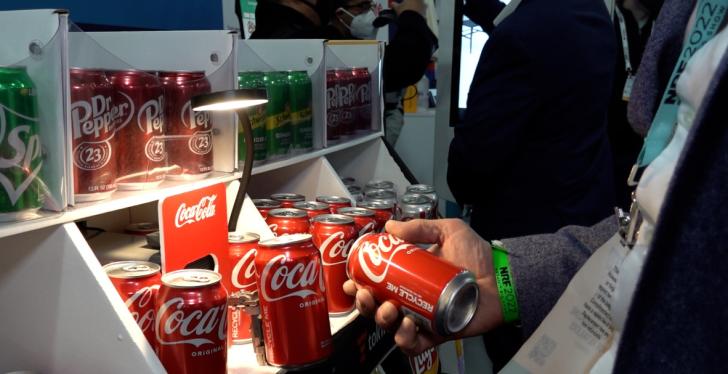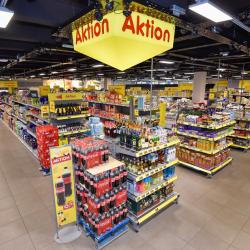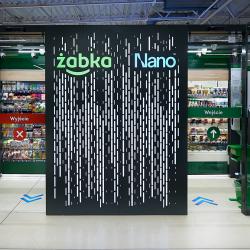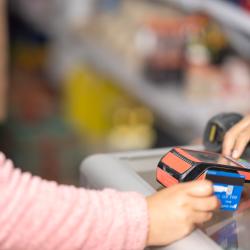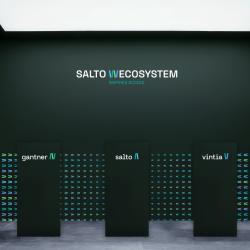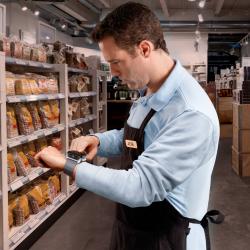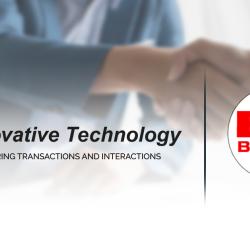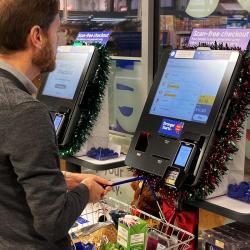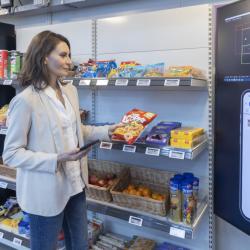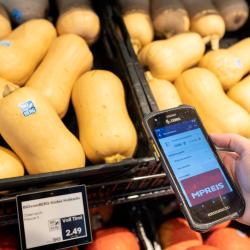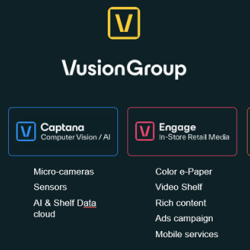Shoppable content: content and commerce merge with a click
The potential goes beyond fashion and sports
panthermedia.net/AntonioGuillem
Shoppable content is a fairly recent e-commerce trend, albeit one that is gaining momentum in the fields of fashion, sports, interior design as well as food. Its implementation is technically sophisticated, but what’s most important is the teamwork in the company and a good, target audience specific concept.
For the past few years, marketing has focused almost entirely on contents; contents that customers are truly interested in. Content should be tailored to the user – think personalization – and thus be relevant, inspiring and also well prepared. “User-generated” content is interactive and involves the actual user in its creation. Premium content that’s exciting for users can create experiences and strengthens loyalty to a brand. Yet the actual purchase via online stores or platforms runs parallel and is inadequately linked with content offers. Once potential users see a product they like, they are still a long way away from making a purchase: first they have to find and select the right online store or a platform, search for the desired product in the right size and preferred color – maybe even change platforms if the craved style is not available – and subsequently click through the ordering process. This is time-consuming; every customer knows that, and so there is a high likelihood that customers initially linger to check out content that’s exciting to them. Customers remember the products later on – or they don‘t. In doing so, the actual impulse to buy is not being optimized and theoretically willing online shoppers often bail at the last moment before they click the crucial “buy” button. That’s why companies should always offer their customers new inspirations and incentives to already make a buying decision during the information process and appeal to potential buyers with innovative content strategies during all phases of the customer lifecycle. This is how retailers gain and retain customers and generate valuable leads. But what might such a content marketing innovation look like?
The online retailer Net-a-porter illustrates a successful implementation: the mail order retailer for designer clothes and accessories stages an exclusive selection of items in a certain look, specific location or matching theme, while all of the showcased products in the magazine can be purchased with a mouse click. British retailer Marks & Spencer directs customers from a video to the corresponding product page via an inserted information button, whereas videos of the Swiss company Bally are actually interactive. Customers can click on individual articles in this case as well. Fashion retailer ASOS invites its customers to share photos of themselves dressed in their ASOS garments and accessories on Instagram or Facebook with the hashtag #AsSeenOnMe. Next to the photos of the users are the corresponding product pages, allowing viewers to immediately buy a look they see and like.

Merging content and commerce – interesting for both customers and retailers
The previously mentioned retailers have one thing in common: they utilize a new form of content design – called shoppable content. It refers to content in online magazines, blog posts, videos or images that provide a direct purchasing opportunity. That is to say, the user can click on products featured in the posts, images or videos and add the items to the shopping cart or he/she is redirected to the correlating product page to purchase the items. At a maximum, there are just two clicks separating the desire to buy and gratification. In doing so, shoppable content creates a seamless connection between content and commerce and definitely benefits both parties:
It’s convenient for the customer, the “have-to-have-it-now” impulse is satisfied immediately without the need for time-consuming research and having to search for the desired item on multiple platforms and product subpages or the necessity to first register and click through a long payment process. In the best-case scenario, the customer is not being interrupted while he/she reads the story and watches the video. If this is a smooth process, consumers might easily get used to this and even expect this type of purchase option in the future and get frustrated if it isn’t available.
Meanwhile, manufacturers can use shoppable content to provide a more emotional and extremely shortened buying process and thus set themselves apart from the competition. The merging of content and commerce increases traffic and customer loyalty. Shoppable content signifies a more dynamic and possibly even more lucrative approach than the sole option of selling items on the classic online store: attention, interest, desire, and action – those being the four relevant steps when purchasing a product – work perfectly with shoppable content. Customers are approached during all steps of the customer lifecycle because they are able to purchase all products virtually immediately through constant inspiration and without interrupting their reading. Quicker online purchases improve conversion rates, while the impact of the content is also directly measurable and thus more manageable.
The potential goes beyond fashion and sports
This new approach is essentially interesting for all online stores. Needless to say, the areas of fashion, interior design, and sports are particularly well-suited for shoppable content because their contents are great to translate into stories and images. It is also easy to create user-generated content in these fields. This concept is also conceivable for home improvement stores by introducing do-it-yourself projects of their respective communities in an online magazine for example. The reader is subsequently able to directly place the tools and materials that were used in these projects into his/her shopping cart. Having said all that, other industry sectors like the food and beverage trade will definitely also be inspired in the future. Marks & Spencer already uses appealing YouTube videos with clickable recipes. And speaking of YouTube: social media platforms are going to play an important role as well. Pinterest has responded to this trend by launching its “buyable pins” for U.S. users; in the U.S, Instagram lets users directly purchase their dream objects via third-party providers by using the “shop now” function. In the future, YouTube also wants to offer advertisers the chance to virtually “buy into“ products shown in videos with shopping options.
Requirements and challenges of using shoppable content
For an investment in shoppable content to pay off, you need adequate traffic on your website to reach a sufficient number of potential buyers in the first place. The implementation is technically sophisticated. Retailers should rely on the help of experts like the digital agency i-ways sales solutions GmbH when it comes to producing interactive videos. That being said, another aspect is important in the beginning: to be able to use shoppable content successfully, you need to intimately know your target audience – or get to know it, in case you have not done so yet. You need to be able to answer fundamental questions such as, what distinguishes you as a company and what you want to offer your customers. What is your product able to do? How, in which situations and why do users use it? What do users do before, during and after using your product? These answers subsequently provide the basis for great stories, in which the products can be included.
If you want to merge content and commerce, it obviously also implies that the corresponding departments within the company work hand in hand; in other words, an integrated marketing and sales approach is crucial.
The content needs to be strategically connected with all the other channels because shoppable content can only unleash its full potential given an integrated strategy and the integration of all sales and marketing channels. The customer shopping experience should always take center stage and not the products. The implementation into an effective concept as well as the creation of valuable contents are also always a question of time and capacity – an experienced agency is also able to provide outstanding support to retailers in this instance.
channels: online trading, digital signage, content marketing


